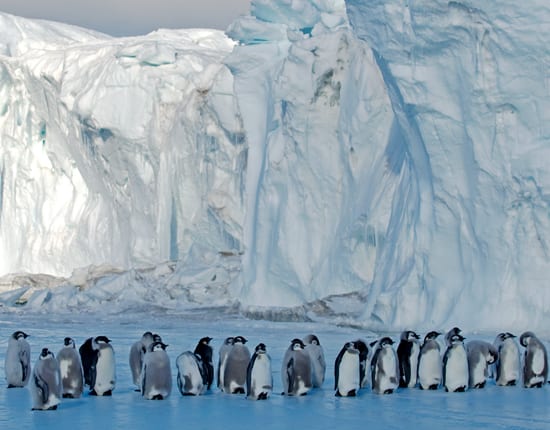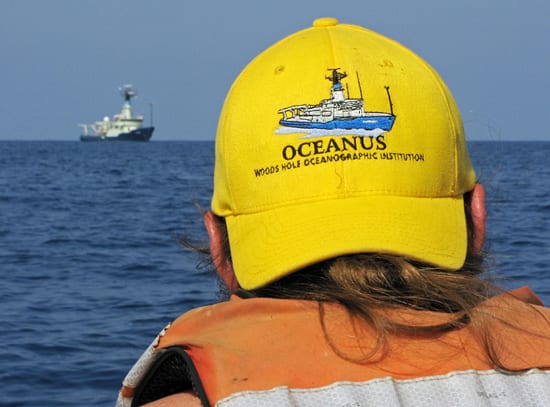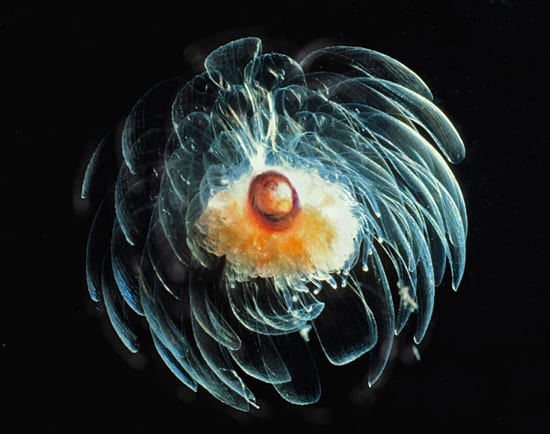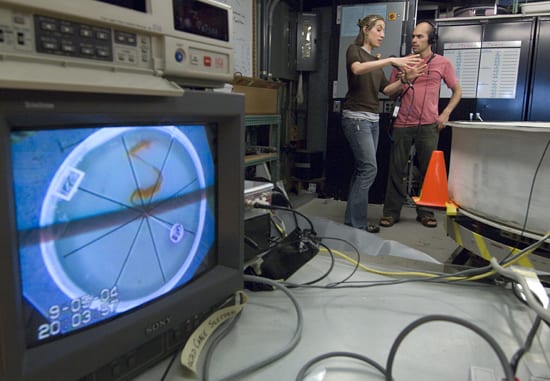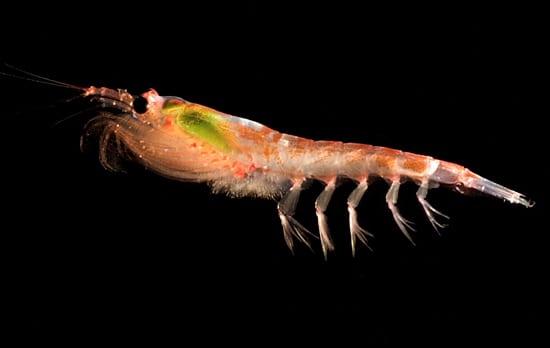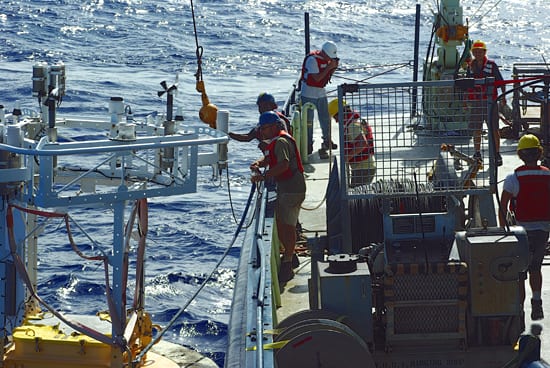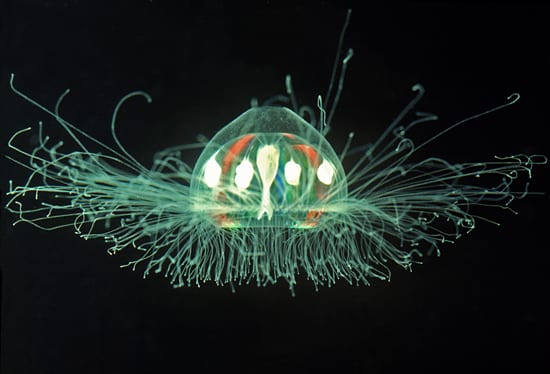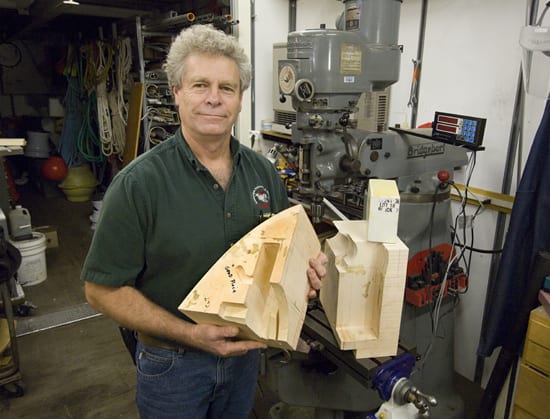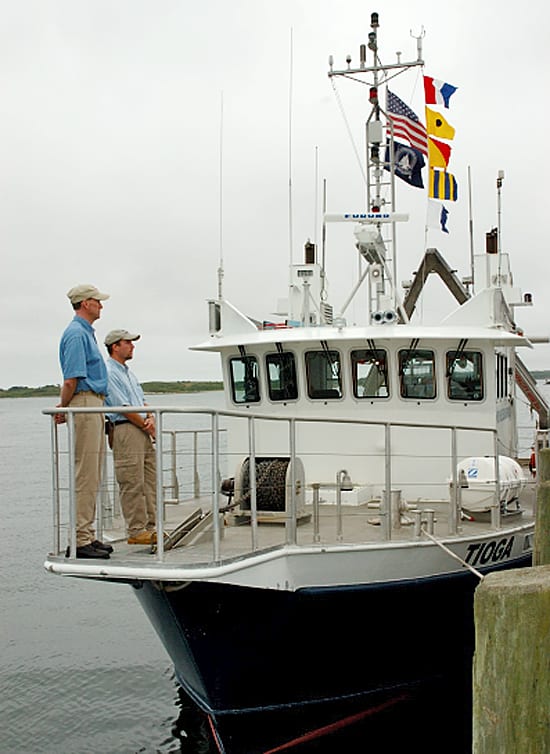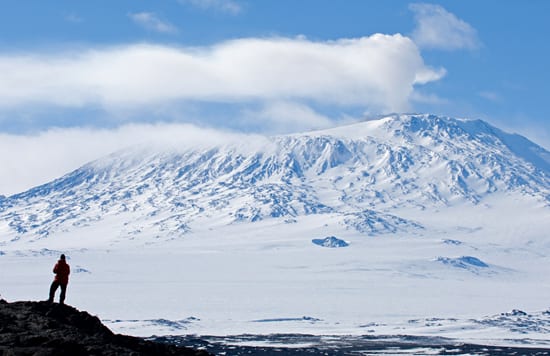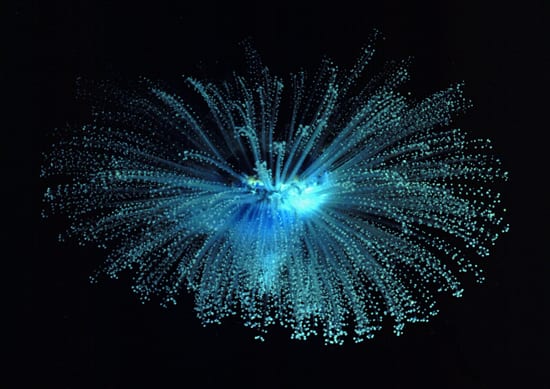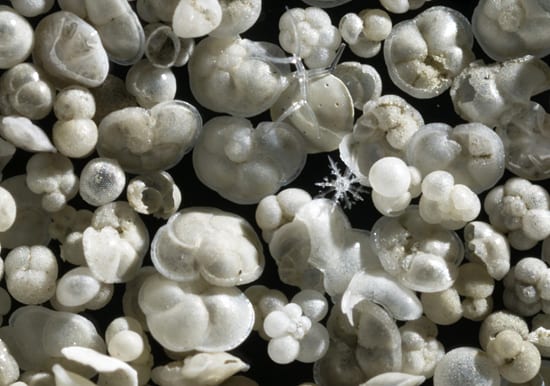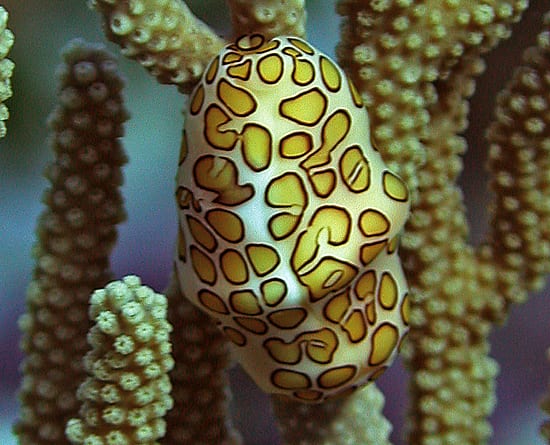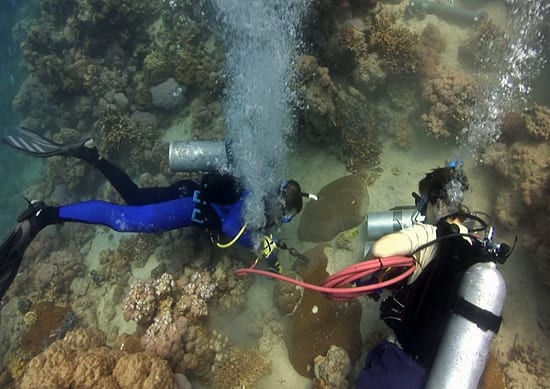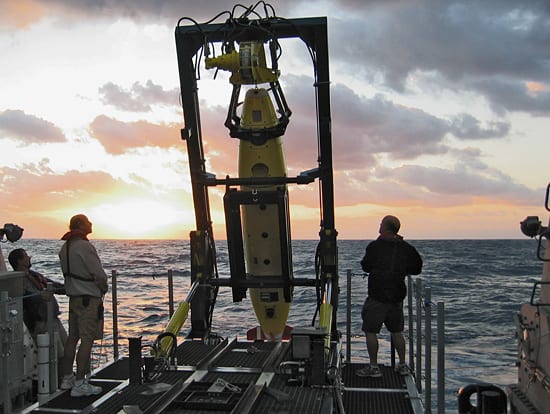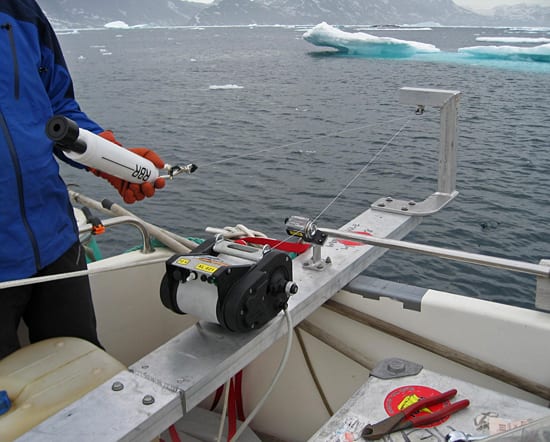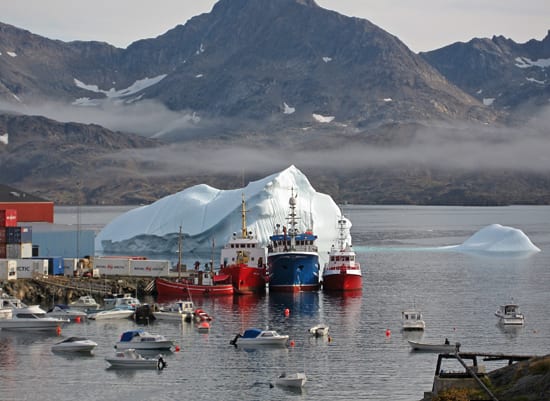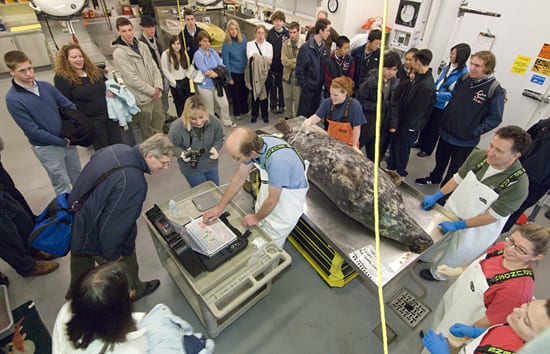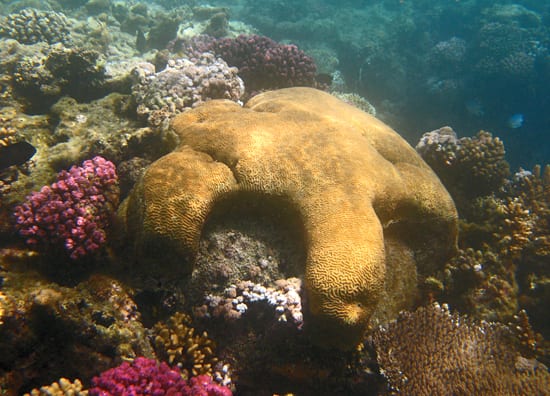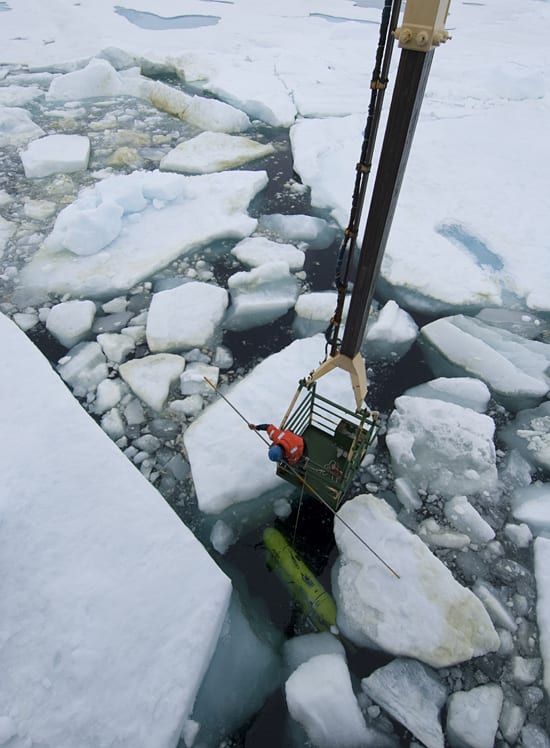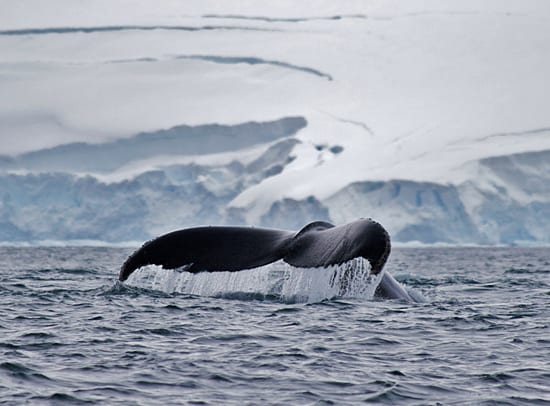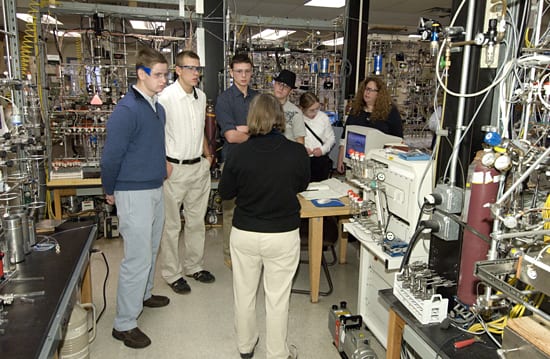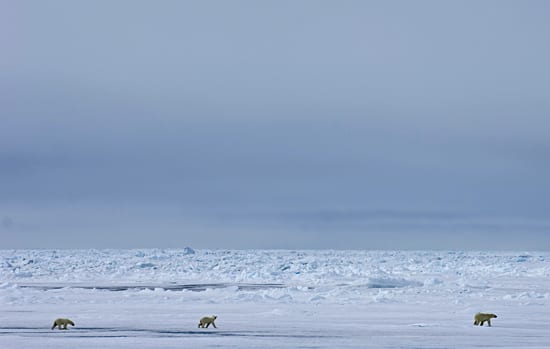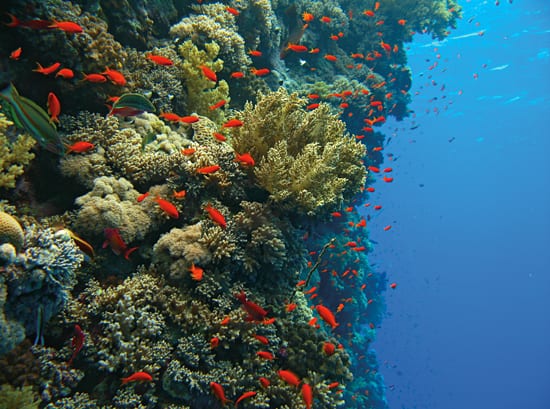Multimedia Items
Marching toward extinction?
Emperor penguins (popularized by the 2005 movie “March of the Penguins”) depend on sea ice for their daily lives — it’s where they breed, feed, and molt. These young […]
Read MoreSeeing double
From a small boat, while scouting for jellyfish, R/V Oceanus Chief Mate Ethan Galac took in views of the 177-foot ship. He and other crew members were helping scientists Larry Madin and Erich […]
Read MoreFlower of the deep
The deep ocean is home to hundreds of species with soft, jelly-like tissues. Many of these gelatinous animals are transparent, and many are beautiful. Siphonophores, such as the […]
Read MoreLaboratory and studio
MIT/WHOI Joint Program student Stephanie Waterman was interviewed about her research for an audio slide show produced by Ari Daniel Shapiro, a recent graduate from the Joint Program. Stephanie […]
Read MoreAntarctic krill
WHOI/MIT Joint Program graduate student Andrew McDonnell captured this image of an Antarctic krill during the first of two month-long cruises off of the West Antarctic Peninsula during […]
Read MoreBack on board
Fragile predator
Foam, it’s not just for cups
Front row vessel
Captain Ken Houtler and mate Ian Hanley stand on the bow of their vessel, the R/V Tioga, for a good view of the dockside press conference about WHOI’s role […]
Read MoreSnowy volcano
WHOI researcher and photographer Chris Linder gazes at 12,400-foot Mt. Erebus in Antarctica. This was a calm day at Cape Royds, during an expedition in 2007, “though as you […]
Read MoreBlue rays
Is it fireworks, a flower, or a 1970’s fiber-optics lamp? None of the above!—it’s a colonial ocean animal related to jellyfish, called Porpita porpita. The colony has radiating blue “tentacles”—really […]
Read MoreShells reveal the past
Seafloor sediments are full of tiny, lovely shells of single-celled ocean organisms that lived, died, and sank to the ocean bottom, building up in layers over the ages. The fossil […]
Read MoreBeautiful but destructive
Drilling in the deep
WHOI post-doctoral researcher Neal Cantin (left) and MIT/WHOI Joint Program student Casey Saenger (right) collect tissue samples from a Diploastrea coral near a Red Sea cement plant. Cantin […]
Read MoreUP AND AT ‘EM!
Members of the CATALYST ONE expedition team prepare for a sunrise launch in December 2008 of one of two 6,000-meter autonomous underwater vehicles (AUVs), owned by the Waitt Institute for Discovery. […]
Read MoreWorking among icebergs
Are warmer ocean waters affecting Greenland’s ice sheet? To find answers, WHOI scientists this fall made use of a local, small vessel able to navigate the iceberg-filled waters of Sermilik […]
Read MoreBergs and boats
A new lab tool for animal research
WHOI Biologist Michael Moore working with the International Fund for Animal Welfare Marine Mammal Rescue and Research Team prepare to examine a gray seal that was found dead in […]
Read MoreAn ancient presence
Brain coral colonies can live for hundreds of years, and their skeletons preserve a record of environmental and climate changes throughout their lifetimes. WHOI scientists studying Earth’s past climate […]
Read MoreLost and found
On board the research vessel Oden in 2007, WHOI engineer John Kemp used the ship’s crane-operated metal basket to retrieve a robotic vehicle called Puma. With a long metal pole, Kemp […]
Read MoreA whale fluke in Antarctica
A humpback whale shows it’s tail, or fluke, off shore from the Unites States Antarctic Program’s Palmer Station, as the R/V L. M. Gould departs for its first oceanographic station […]
Read MoreBowlers touring WHOI
Lunchtime, with bears
Polar Discovery photographer Chris Linder was just about to eat lunch aboard the Swedish research vessel Oden in the Arctic Ocean, when polar bears were sighted and he […]
Read MoreThe vertical life
Red Sea coral communities thrive on vertical walls at the reef’s edge, where individual coral colonies compete for access to sunlight and food-carrying currents. The shapes of the colonies change […]
Read More
